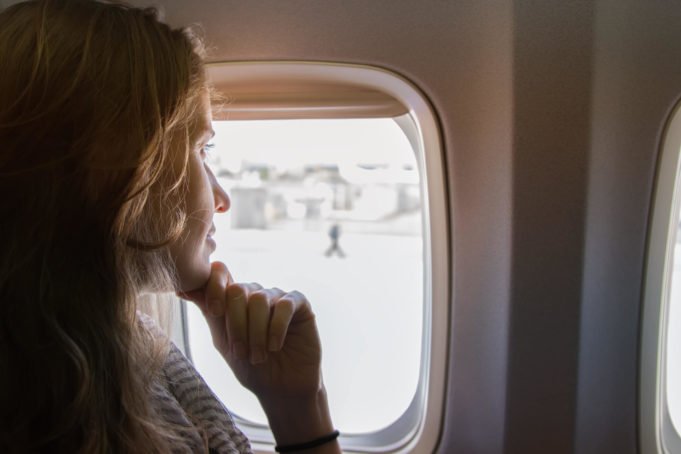Would you like to float in virtual clouds? Welcome on board! An Emirates airline in Dubai hospitably invites to its brand-new windowless Boeing 777 jets, which have been recently presented. There are no references about the atmosphere on board of the first class cabin passengers, where virtual windows have been already installed. However, in terms of practice, Sir Tim Clark, President of Emirates, has claimed that such aircrafts are lighter and definitely faster.
Even despite luxurious conditions and high quality of facilities, there is an inconvenience of window deficiency. According to 1-1-1 configuration of 6 seats, each passenger has an enclosed suite, but one in the middle has not got a window. “Nothing to miss outside” – you would reply, but something important will be gotten.
In fact, nothing special, real-time ‘lofty’ images of high quality are transmitted on the walls inside from cameras on the plane. However, this windows removal saves a half of the whole aircraft weight because it takes additional fuselage reinforcement to install windows. In such a way it will be a removal of the joint in the plain’s armor, no structural weaknesses will be on the fuselage. So, new level of safety can be reached.
Emirates president confirmed to BBC that in perspective they will have planes without windows at all. In addition to weight reduction and faster speed, an aircraft will use less fuel. Consequently, it will be less harmful to environment and shorten travel time. Looks like win-win situation. But … there is always ‘but’.
In spite of obvious benefits, passengers and crew are not so enthusiastic. And they have actual reasons to be opposed.
The first and the foremost are safety concerns. The fuselage definitely becomes structurally stronger, but in case of emergency, it is vitally important for flight attendants to check aircraft outside, especially during evacuation. So, is it an invention of threat or rescue? The European Aviation Safety Agency, aviation regulator, assures that there will not be any hinders to guarantee safety.
It is a thought-provoking topic not only in terms of fast developing future and place of technology in it but also innovative approach to aerophobia treatment. No windows – no fear of flight? Aerophobics are saved, but it seems that claustrophobics are under the threat.
And second, what if screens fail? Frozen and flickering images on displays would keep passengers in suspense more than peaceful clouds outside. Thus, there is something enchanting outside above the clouds that technology cannot replace.
However, now, looks like the sky is a limit for technological progress.







